Best solar inverters 2024
Updated: September 3, 2024Our expert and consumer reviews of the leading brands of residential sized solar inverters show the best solar inverter to suit your home in 2020
Main Topics:
Solar panel cost calculator
What does an inverter do?
Solar inverters are an integral part of every solar power system. They perform two key functions:
DC to AC conversion
All solar panels generate Direct Current (DC); a solar inverter is required to convert this into Alternating Current (AC), the form of electricity usable by your home.
MPP tracking
The operating conditions of solar panels - sunlight intensity and panel temperature - fluctuate throughout the day. This means that the possible solar panel voltage and current are always changing as well. In a process called Maximum Power Point (MPP) tracking, the solar inverter dynamically selects the exact combination of the two that will produce the most power.
Current-Voltage (I-V) Curve. This is an example of MPP tracking in action. Here, the solar inverter sets current & voltage to point b for maximum output.
Types of solar inverter
There are two categories to consider when deciding on the right solar inverter type: the solar inverter technology, and the type of solar power system the inverter is for.
Solar inverter technology
- String inverter: A string inverter is a single, standalone unit that converts power from a whole string (or strings) of solar panels. String inverters are cheap and convenient, but tend to be the least efficient.
- String inverter + power optimizer: Power optimizers are attached to each individual panel. They perform MPP tracking at the module level; the optimized DC power is then sent to the string inverter for conversion into AC power. Combining string inverters with power optimizers will increase your cost but allow your system to handle issues like shading better.
- Microinverter: Microinverters are also attached to individual panels. They perform both MPP tracking and power conversion at the module level, allowing each panel to output usable AC power. They’re good at dealing with shade (like power optimizers), and have the additional advantage of making your solar system easy to expand. They are, however, the most expensive type of inverter.
Learn more: Inverter types compared
The type of solar power system the inverter is for
The solar inverter you choose will need to be compatible solar system type you are installing:
- Grid-tied inverters are meant for grid-tied solar systems, the most common system type. They manage a two-way relationship with the grid, exporting solar power to it, and importing utility power from it as required.
- Hybrid inverters are designed to work with hybrid solar systems (aka solar-plus-storage systems). They have the same functionality as a grid-tie inverter, but can also charge and draw power from a battery setup.
- Off-grid inverters are used in off-grid solar systems, i.e. fully independent solar power systems, giving you back up power when the grid is down. An off-grid inverter requires a battery backup to function, and cannot be connected to the grid.
You can learn more about each solar power system type below
How do solar panels work?
Grid-tied solar system
A grid-tied system is the most common type of solar system. It has no solar battery for backup power and utilizes net metering to maximize savings. Solar panels are mounted on your roof then wired together, and the power generated flows into an inverter where direct current (DC) electricity is converted into alternating current (AC) electricity. This electricity is either used by your home or is exported to the utility grid.
Hybrid solar system
In hybrid solar systems, rooftop solar panels are connected to both a solar battery and the electric grid. The solar electricity generated by your panels that your home does not use is stored in the battery instead of being sent to the grid, which reduces your reliance on the utility while also providing backup power when needed. Battery storage is still expensive but you may be able to reduce costs by using state incentives.
Off-grid solar system
Off-grid solar systems are not connected to the grid at all, so all of your energy needs must be met by the sun. There is no utility to fall back on. The solar installation needs to power your home not only during the day, but after dark as well, so many solar panels and a large battery system are required. These systems are often expensive and don’t make sense for homes that have access to the grid.
4.42 113 Reviews
Latest review
pweil,
over 1 month
We had a pair of SunnyBoys installed on '07. Six years later, one of them died. Since this model had been discontinued, and because ours was out of the wimpy warranty, we had to ditch the one good one and replace the pair with a brand new SB 5000US. Now the second one (SB 5000US) has died after 11 years. SMA's support is virtually nonexistent. Our installer went out of business, and they offered no help in finding another one. It's not hard to read between the lines: they don't give a damn about homeowner-customers.
Read more
Average cost (5kW system)
$14,003 ($2.80 per watt)
Latest review
pweil, over 1 month
We had a pair of SunnyBoys installed on '07. Six years later, one of them died. Since this model had been discontinued, and because ours was out of the wimpy warranty, we had to ditch the one good one and replace the pair with a brand new SB 5000US. Now the second one (SB 5000US) has died after 11 years. SMA's support is virtually nonexistent. Our installer went out of business, and they offered no help in finding another one. It's not hard to read between the lines: they don't give a damn about homeowner-customers.
3.98 66 Reviews
Latest review
Anonymous,
over 1 month
The Primo is a transformerless inverter and the snap inverter design makes it very easy to install. The connection unit bolts to a wall and the inverter hinges into the connection unit and is attached by two screws making the inverter very easy to remove and service. Fronius is the only inverter manufacturer that can replace boards if there is a problem, usually an hour job. It has two maximum power point trackers, so you can have strings facing different directions. It has very low warranty claim rate unlike the IG. The monitoring can be done via wifi or ethernet and is very simple to configure. On Fronius' solar website, you can look at AC volts and amps, DC volts and amps, mppt 1 power, mppt2 power, and total power. If you don't have any shading, definitely go with a string inverter and this is a good one. Less components to fail versus Enphase - inverter behind every panel in an extreme environment.
Read more
Average cost (5kW system)
$14,003 ($2.80 per watt)
Latest review
Anonymous, over 1 month
The Primo is a transformerless inverter and the snap inverter design makes it very easy to install. The connection unit bolts to a wall and the inverter hinges into the connection unit and is attached by two screws making the inverter very easy to remove and service. Fronius is the only inverter manufacturer that can replace boards if there is a problem, usually an hour job. It has two maximum power point trackers, so you can have strings facing different directions. It has very low warranty claim rate unlike the IG. The monitoring can be done via wifi or ethernet and is very simple to configure. On Fronius' solar website, you can look at AC volts and amps, DC volts and amps, mppt 1 power, mppt2 power, and total power. If you don't have any shading, definitely go with a string inverter and this is a good one. Less components to fail versus Enphase - inverter behind every panel in an extreme environment.
4.19 408 Reviews
Latest review
John Doe,
over 1 month
Do not believe the hype that your electric bill will go away. It will not. I waited for one year to write this review to see if the promises made would materialize. They don't. All i have to say is that during the one of the hottest and sunny months of the year, I paid for electricity. Do not buy or install. This is the biggest lie going so far.
Read more
Average cost (5kW system)
$14,619 ($2.92 per watt)
Latest review
John Doe, over 1 month
Do not believe the hype that your electric bill will go away. It will not. I waited for one year to write this review to see if the promises made would materialize. They don't. All i have to say is that during the one of the hottest and sunny months of the year, I paid for electricity. Do not buy or install. This is the biggest lie going so far.
2.75 95 Reviews
Latest review
SolarUser,
over 1 month
One of the more expensive inverters on the market but still lasted only one year.
Read more
Average cost (5kW system)
$13,947 ($2.79 per watt)
Latest review
SolarUser, over 1 month
One of the more expensive inverters on the market but still lasted only one year.
Top rated grid tied inverters
Average inverter review score: 3.85
Average inverter cost per watt: $0.21

Best unit price
$137
Best system price
Installed 5kW system
$0
$0.00 p/w
Table 1: IQ7PLUS-72-E-US overview
Inverter Type
Micro Inverter
Minimum Voltage
16 V
Maximum Voltage
60 V
Maximum Current
15 A
Peak Output Power
295 watts

Best unit price
$126
Best system price
Installed 5kW system
$11,015
$2.20 p/w
Table 1: IQ7-60-E-US overview
Inverter Type
Micro Inverter
Minimum Voltage
16 V
Maximum Voltage
48 V
Maximum Current
15 A
Peak Output Power
250 watts

Best unit price
$160
Best system price
Installed 5kW system
$8,000
$1.60 p/w
Table 1: IQ7A-72-2-US overview
Inverter Type
Micro Inverter
Minimum Voltage
33 V
Maximum Voltage
58 V
Maximum Current
15 A
Peak Output Power
366 watts

Best unit price
$157
Best system price
Installed 5kW system
$11,931
$2.39 p/w
Table 1: IQ7X-96-E-US overview
Inverter Type
Micro Inverter
Minimum Voltage
25 V
Maximum Voltage
79.5 V
Maximum Current
10 A
Peak Output Power
320 watts

Best system price
Installed 5kW system
$10,866
$2.17 p/w
Table 1: IQ8H-208-72-2-US1 overview
Inverter Type
Micro Inverter
Minimum Voltage
16 V
Maximum Voltage
58 V
Maximum Current
15 A
Peak Output Power
366 watts

Best system price
Installed 5kW system
$11,612
$2.32 p/w
Table 1: IQ8H-240-72-2-US overview
Inverter Type
Micro Inverter
Minimum Voltage
25 V
Maximum Voltage
58 V
Maximum Current
15 A
Peak Output Power
384 watts

Best system price
Installed 5kW system
$11,236
$2.25 p/w
Table 1: IQ8A-72-2-US overview
Inverter Type
Micro Inverter
Minimum Voltage
25 V
Maximum Voltage
58 V
Maximum Current
15 A
Peak Output Power
366 watts

Best system price
Installed 5kW system
$11,692
$2.34 p/w
Table 1: IQ8M-72-2-US overview
Inverter Type
Micro Inverter
Minimum Voltage
25 V
Maximum Voltage
58 V
Maximum Current
15 A
Peak Output Power
330 watts

Best system price
Installed 5kW system
$11,307
$2.26 p/w
Table 1: IQ8PLUS-72-2-US overview
Inverter Type
Micro Inverter
Minimum Voltage
30 V
Maximum Voltage
58 V
Maximum Current
15 A
Peak Output Power
300 watts

Best system price
Installed 5kW system
$10,955
$2.19 p/w
Table 1: IQ8-60-2-US overview
Inverter Type
Micro Inverter
Minimum Voltage
30 V
Maximum Voltage
48 V
Maximum Current
15 A
Peak Output Power
245 watts
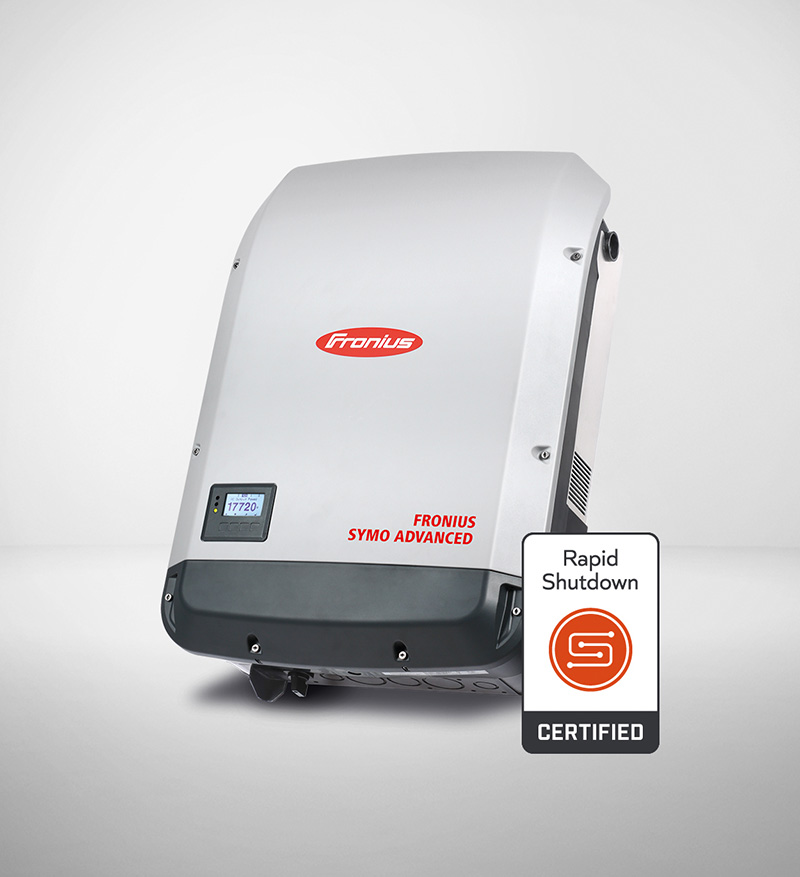
Best unit price
$3,152
$0.13 per watt
Best system price
Installed 5kW system
$11,509
$2.30 p/w
Table 1: SYMO ADV 24.0-3 overview
Inverter Type
String Inverter
Minimum Voltage
500 V
Maximum Voltage
800 V
Maximum Current
49.5 A
Peak Output Power
24 kW

Best unit price
$3,116
$0.14 per watt
Best system price
Installed 5kW system
$11,092
$2.22 p/w
Table 1: SYMO ADV 22.7-3 overview
Inverter Type
String Inverter
Minimum Voltage
500 V
Maximum Voltage
800 V
Maximum Current
49.5 A
Peak Output Power
22.7 kW

Best unit price
$3,255
$0.16 per watt
Best system price
Installed 5kW system
$11,598
$2.32 p/w
Table 1: SYMO ADV 20.0-3 overview
Inverter Type
String Inverter
Minimum Voltage
450 V
Maximum Voltage
800 V
Maximum Current
49.5 A
Peak Output Power
20 kW

Best unit price
$3,451
$0.23 per watt
Best system price
Installed 5kW system
$11,234
$2.25 p/w
Table 1: PRIMO 15.0-1 overview
Inverter Type
String Inverter
Minimum Voltage
320 V
Maximum Voltage
800 V
Maximum Current
49.5 A
Peak Output Power
15 kW

Best unit price
$3,051
$0.24 per watt
Best system price
Installed 5kW system
$11,170
$2.23 p/w
Table 1: PRIMO 12.5-1 overview
Inverter Type
String Inverter
Minimum Voltage
260 V
Maximum Voltage
800 V
Maximum Current
49.5 A
Peak Output Power
12.5 kW

Best unit price
$3,233
$0.22 per watt
Best system price
Installed 5kW system
$11,854
$2.37 p/w
Table 1: SYMO ADV 15.0-3 overview
Inverter Type
String Inverter
Minimum Voltage
350 V
Maximum Voltage
800 V
Maximum Current
49.5 A
Peak Output Power
15 kW
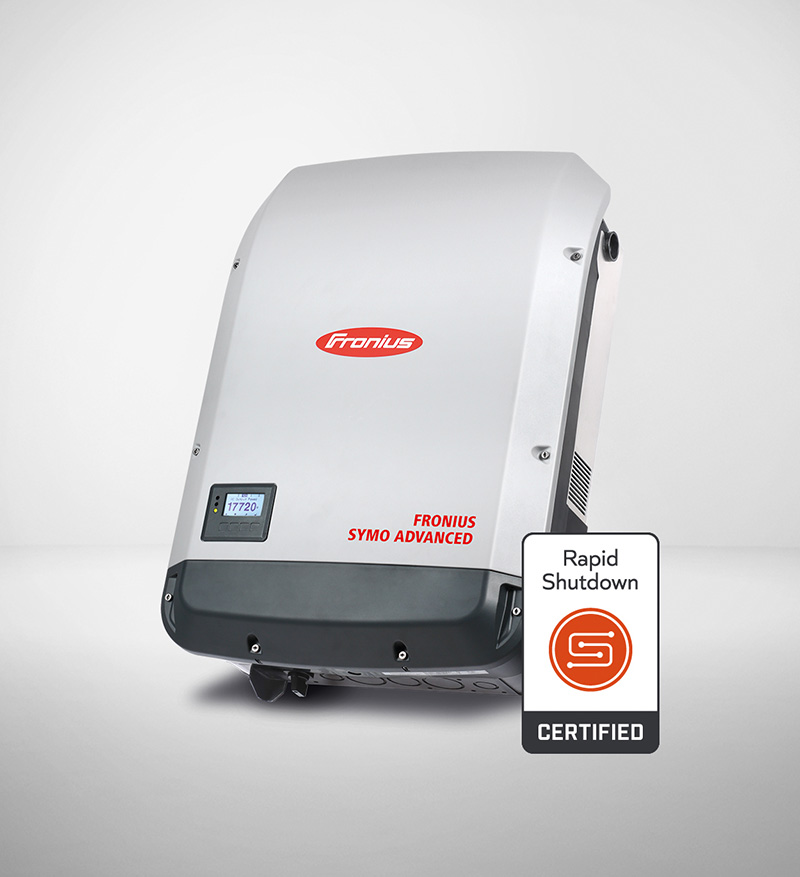
Best unit price
$3,519
$0.29 per watt
Best system price
Installed 5kW system
$11,666
$2.33 p/w
Table 1: SYMO ADV 12.0-3 overview
Inverter Type
String Inverter
Minimum Voltage
300 V
Maximum Voltage
500 V
Maximum Current
37.5 A
Peak Output Power
12 kW

Best unit price
$3,136
$0.31 per watt
Best system price
Installed 5kW system
$10,987
$2.20 p/w
Table 1: SYMO ADV 10.0-3 overview
Inverter Type
String Inverter
Minimum Voltage
300 V
Maximum Voltage
500 V
Maximum Current
37.5 A
Peak Output Power
10 kW

Best unit price
$2,822
$0.25 per watt
Best system price
Installed 5kW system
$11,571
$2.31 p/w
Table 1: PRIMO 11.4-1 overview
Inverter Type
String Inverter
Minimum Voltage
240 V
Maximum Voltage
800 V
Maximum Current
49.5 A
Peak Output Power
11.4 kW

Best unit price
$2,488
$0.25 per watt
Best system price
Installed 5kW system
$11,131
$2.23 p/w
Table 1: PRIMO 10.0-1 overview
Inverter Type
String Inverter
Minimum Voltage
220 V
Maximum Voltage
800 V
Maximum Current
51 A
Peak Output Power
9.99 kW

Best system price
Installed 5kW system
$11,181
$2.24 p/w
Table 1: MIN10000TL-XH-US overview
Inverter Type
String Inverter
Minimum Voltage
360 V
Maximum Voltage
600 V
Maximum Current
16.9 A
Peak Output Power
11.4 kW
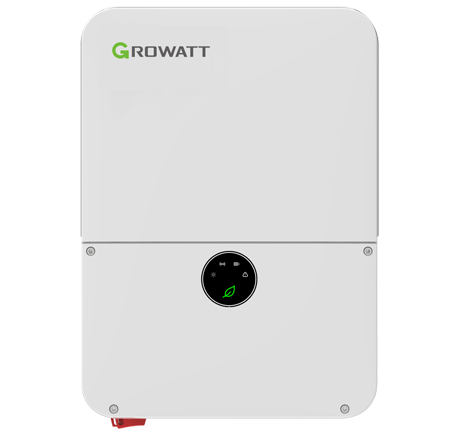
Best system price
Installed 5kW system
$11,069
$2.21 p/w
Table 1: MIN9000TL-XH-US overview
Inverter Type
String Inverter
Minimum Voltage
360 V
Maximum Voltage
600 V
Maximum Current
16.9 A
Peak Output Power
9 kW
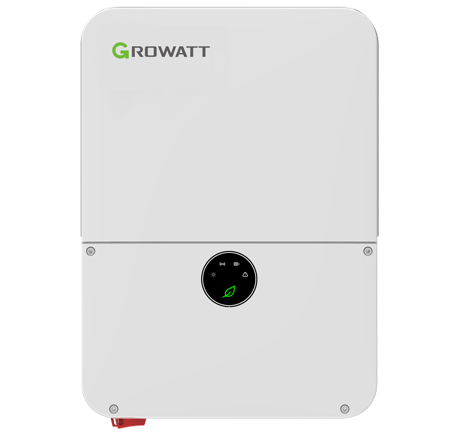
Best system price
Installed 5kW system
$11,384
$2.28 p/w
Table 1: MIN8200TL-XH-US overview
Inverter Type
String Inverter
Minimum Voltage
360 V
Maximum Voltage
600 V
Maximum Current
16.9 A
Peak Output Power
8.2 kW

Best system price
Installed 5kW system
$10,864
$2.17 p/w
Table 1: MIN7600TL-XH-US overview
Inverter Type
String Inverter
Minimum Voltage
360 V
Maximum Voltage
600 V
Maximum Current
16.9 A
Peak Output Power
7.6 kW

Best system price
Installed 5kW system
$10,850
$2.17 p/w
Table 1: MIN6000TL-XH-US overview
Inverter Type
String Inverter
Minimum Voltage
360 V
Maximum Voltage
600 V
Maximum Current
16.9 A
Peak Output Power
6 kW

Best system price
Installed 5kW system
$11,190
$2.24 p/w
Table 1: MIN5000TL-XH-US overview
Inverter Type
String Inverter
Minimum Voltage
360 V
Maximum Voltage
600 V
Maximum Current
16.9 A
Peak Output Power
5 kW

Best system price
Installed 5kW system
$11,126
$2.23 p/w
Table 1: MIN3800TL-XH-US overview
Inverter Type
String Inverter
Minimum Voltage
360 V
Maximum Voltage
600 V
Maximum Current
16.9 A
Peak Output Power
3.8 kW

Best system price
Installed 5kW system
$11,325
$2.27 p/w
Table 1: MIN3000TL-XH-US overview
Inverter Type
String Inverter
Minimum Voltage
360 V
Maximum Voltage
600 V
Maximum Current
16.9 A
Peak Output Power
3 kW

Best system price
Installed 5kW system
$11,849
$2.37 p/w
Table 1: SPH6000TL BL-US overview
Inverter Type
Hybrid Battery Inverter
Minimum Voltage
150 V
Maximum Voltage
550 V
Maximum Current
16 A
Peak Output Power
6 kW

Best system price
Installed 5kW system
$11,010
$2.20 p/w
Table 1: SPH5000TL BL-US overview
Inverter Type
Hybrid Battery Inverter
Minimum Voltage
150 V
Maximum Voltage
550 V
Maximum Current
16 A
Peak Output Power
5 kW

Best unit price
$41
Best system price
Installed 5kW system
$11,787
$2.36 p/w
Table 1: TS4-R-S overview
Inverter Type
Power Optimizer
Minimum Voltage
16 V
Maximum Voltage
90 V
Maximum Current
15 A

Best unit price
$1,270
$0.16 per watt
Best system price
Installed 5kW system
$11,833
$2.37 p/w
Table 1: SB7.7-US-41 overview
Inverter Type
String Inverter
Minimum Voltage
100 V
Maximum Voltage
550 V
Maximum Current
18 A
Peak Output Power
7.7 kW

Best unit price
$1,190
$0.17 per watt
Best system price
Installed 5kW system
$14,750
$2.95 p/w
Table 1: SB7.0-US-41 overview
Inverter Type
String Inverter
Minimum Voltage
100 V
Maximum Voltage
550 V
Maximum Current
18 A
Peak Output Power
7 kW

Best unit price
$1,060
$0.18 per watt
Best system price
Installed 5kW system
$11,332
$2.27 p/w
Table 1: SB6.0-US-41 overview
Inverter Type
String Inverter
Minimum Voltage
100 V
Maximum Voltage
550 V
Maximum Current
18 A
Peak Output Power
6 kW

Best unit price
$985
$0.20 per watt
Best system price
Installed 5kW system
$11,024
$2.20 p/w
Table 1: SB5.0-US-41 overview
Inverter Type
String Inverter
Minimum Voltage
100 V
Maximum Voltage
550 V
Maximum Current
18 A
Peak Output Power
5 kW

Best unit price
$930
$0.24 per watt
Best system price
Installed 5kW system
$11,904
$2.38 p/w
Table 1: SB3.8-US-41 overview
Inverter Type
String Inverter
Minimum Voltage
100 V
Maximum Voltage
550 V
Maximum Current
18 A
Peak Output Power
3.8 kW

Best unit price
$902
$0.30 per watt
Best system price
Installed 5kW system
$11,646
$2.33 p/w
Table 1: SB3.0-US-41 overview
Inverter Type
String Inverter
Minimum Voltage
100 V
Maximum Voltage
550 V
Maximum Current
18 A
Peak Output Power
3 kW

Best unit price
$26
$0.00 per watt
Best system price
Installed 5kW system
$10,905
$2.18 p/w
Table 1: TS4-R-F overview
Inverter Type
Power Optimizer
Minimum Voltage
75 V
Maximum Voltage
90 V
Peak Output Power
475 kW
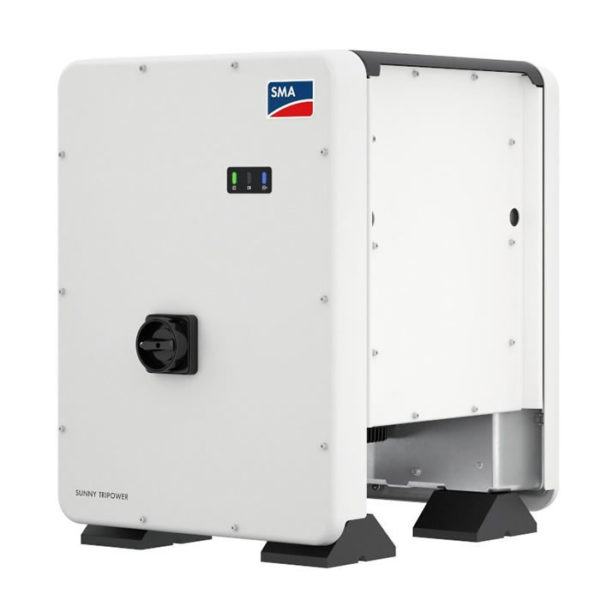
Best unit price
$4,360
$0.07 per watt
Best system price
Installed 5kW system
$10,989
$2.20 p/w
Table 1: STP-62-US-40 overview
Inverter Type
String Inverter
Minimum Voltage
150 V
Maximum Voltage
1000 V
Maximum Current
30 A
Peak Output Power
62.5 kW

Best unit price
$3,989
$0.12 per watt
Best system price
Installed 5kW system
$11,389
$2.28 p/w
Table 1: STP-33-US-40 overview
Inverter Type
String Inverter
Minimum Voltage
150 V
Maximum Voltage
1000 V
Maximum Current
30 A
Peak Output Power
33.3 kW

Best unit price
$88
Best system price
Installed 5kW system
$11,085
$2.22 p/w
Table 1: P860 (for 2 x 72 cell modules) overview
Inverter Type
Power Optimizer
Minimum Voltage
12.5 V
Maximum Voltage
60 V
Maximum Current
22 A

Best unit price
$85
Best system price
Installed 5kW system
$11,833
$2.37 p/w
Table 1: P400 (for 72 & 96 cell modules) overview
Inverter Type
Power Optimizer
Minimum Voltage
8 V
Maximum Voltage
80 V
Maximum Current
10.1 A

Best unit price
$85
Best system price
Installed 5kW system
$11,165
$2.23 p/w
Table 1: P370 (for higher power 60 & 72 cell modules) overview
Inverter Type
Power Optimizer
Minimum Voltage
8 V
Maximum Voltage
60 V
Maximum Current
11 A

Best unit price
$74
Best system price
Installed 5kW system
$11,564
$2.31 p/w
Table 1: P320 (for 60 cell modules) overview
Inverter Type
String Inverter
Minimum Voltage
8 V
Maximum Voltage
48 V
Maximum Current
11 A

Best unit price
$1,525
$0.25 per watt
Best system price
Installed 5kW system
$11,548
$2.31 p/w
Table 1: STOREDGE SE6000H-US overview
Inverter Type
String Inverter
Minimum Voltage
380 V
Maximum Voltage
480 V
Maximum Current
45 A
Peak Output Power
6 kW
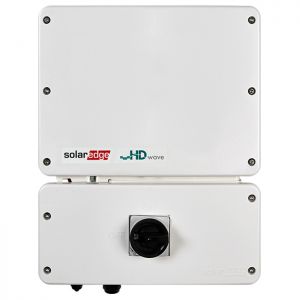
Best unit price
$1,192
$0.31 per watt
Best system price
Installed 5kW system
$11,781
$2.36 p/w
Table 1: STOREDGE SE3800H-US overview
Inverter Type
String Inverter
Minimum Voltage
380 V
Maximum Voltage
480 V
Maximum Current
45 A
Peak Output Power
3.8 kW
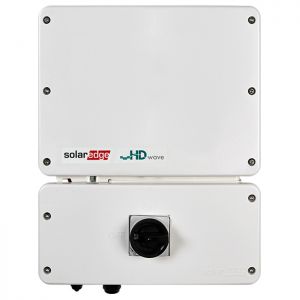
Best unit price
$1,165
$0.39 per watt
Best system price
Installed 5kW system
$11,984
$2.40 p/w
Table 1: STOREDGE SE3000H-US overview
Inverter Type
String Inverter
Minimum Voltage
380 V
Maximum Voltage
480 V
Maximum Current
45 A
Peak Output Power
3 kW

Best unit price
$80
Best system price
Installed 5kW system
$11,861
$2.37 p/w
Table 1: P850 (for 2x high power or bi-facial modules) overview
Inverter Type
Power Optimizer
Minimum Voltage
12.5 V
Maximum Voltage
125 V
Maximum Current
12.5 A

Best unit price
$69
Best system price
Installed 5kW system
$11,368
$2.27 p/w
Table 1: P730 (for 2 x 72 PV modules) overview
Inverter Type
Power Optimizer
Minimum Voltage
12.5 V
Maximum Voltage
125 V
Maximum Current
11 A

Best unit price
$96
Best system price
Installed 5kW system
$11,826
$2.37 p/w
Table 1: P505 (for higher current modules) overview
Inverter Type
Power Optimizer
Minimum Voltage
12.5 V
Maximum Voltage
83 V
Maximum Current
14 A

Best system price
Installed 5kW system
$11,849
$2.37 p/w
Table 1: SPH6000TL BL-US overview
Inverter Type
Hybrid Battery Inverter
Minimum Voltage
150 V
Maximum Voltage
550 V
Maximum Current
16 A
Peak Output Power
6 kW

Best system price
Installed 5kW system
$11,010
$2.20 p/w
Table 1: SPH5000TL BL-US overview
Inverter Type
Hybrid Battery Inverter
Minimum Voltage
150 V
Maximum Voltage
550 V
Maximum Current
16 A
Peak Output Power
5 kW

Best system price
Installed 5kW system
$11,584
$2.32 p/w
Table 1: SPH4600TL BL-US overview
Inverter Type
Hybrid Battery Inverter
Minimum Voltage
150 V
Maximum Voltage
550 V
Maximum Current
16 A
Peak Output Power
4.6 kW

Best system price
Installed 5kW system
$11,589
$2.32 p/w
Table 1: SPH4000TL BL-US overview
Inverter Type
Hybrid Battery Inverter
Minimum Voltage
150 V
Maximum Voltage
550 V
Maximum Current
16 A
Peak Output Power
4 kW

Best system price
Installed 5kW system
$11,270
$2.25 p/w
Table 1: SPH3600TL BL-US overview
Inverter Type
Hybrid Battery Inverter
Minimum Voltage
150 V
Maximum Voltage
550 V
Maximum Current
16 A
Peak Output Power
3.68 kW

Best system price
Installed 5kW system
$11,424
$2.28 p/w
Table 1: SPH3000TL BL-US overview
Inverter Type
Hybrid Battery Inverter
Minimum Voltage
150 V
Maximum Voltage
550 V
Maximum Current
16 A
Peak Output Power
3 kW

Best unit price
$137
Best system price
Installed 5kW system
$0
$0.00 p/w
Table 1: IQ7PLUS-72-E-US overview
Inverter Type
Micro Inverter
Minimum Voltage
16 V
Maximum Voltage
60 V
Maximum Current
15 A
Peak Output Power
295 watts

Best unit price
$126
Best system price
Installed 5kW system
$11,015
$2.20 p/w
Table 1: IQ7-60-E-US overview
Inverter Type
Micro Inverter
Minimum Voltage
16 V
Maximum Voltage
48 V
Maximum Current
15 A
Peak Output Power
250 watts

Best unit price
$160
Best system price
Installed 5kW system
$8,000
$1.60 p/w
Table 1: IQ7A-72-2-US overview
Inverter Type
Micro Inverter
Minimum Voltage
33 V
Maximum Voltage
58 V
Maximum Current
15 A
Peak Output Power
366 watts

Best unit price
$157
Best system price
Installed 5kW system
$11,931
$2.39 p/w
Table 1: IQ7X-96-E-US overview
Inverter Type
Micro Inverter
Minimum Voltage
25 V
Maximum Voltage
79.5 V
Maximum Current
10 A
Peak Output Power
320 watts

Best system price
Installed 5kW system
$10,866
$2.17 p/w
Table 1: IQ8H-208-72-2-US1 overview
Inverter Type
Micro Inverter
Minimum Voltage
16 V
Maximum Voltage
58 V
Maximum Current
15 A
Peak Output Power
366 watts

Best system price
Installed 5kW system
$11,612
$2.32 p/w
Table 1: IQ8H-240-72-2-US overview
Inverter Type
Micro Inverter
Minimum Voltage
25 V
Maximum Voltage
58 V
Maximum Current
15 A
Peak Output Power
384 watts

Best system price
Installed 5kW system
$11,236
$2.25 p/w
Table 1: IQ8A-72-2-US overview
Inverter Type
Micro Inverter
Minimum Voltage
25 V
Maximum Voltage
58 V
Maximum Current
15 A
Peak Output Power
366 watts

Best system price
Installed 5kW system
$11,692
$2.34 p/w
Table 1: IQ8M-72-2-US overview
Inverter Type
Micro Inverter
Minimum Voltage
25 V
Maximum Voltage
58 V
Maximum Current
15 A
Peak Output Power
330 watts

Best system price
Installed 5kW system
$11,307
$2.26 p/w
Table 1: IQ8PLUS-72-2-US overview
Inverter Type
Micro Inverter
Minimum Voltage
30 V
Maximum Voltage
58 V
Maximum Current
15 A
Peak Output Power
300 watts

Best system price
Installed 5kW system
$10,955
$2.19 p/w
Table 1: IQ8-60-2-US overview
Inverter Type
Micro Inverter
Minimum Voltage
30 V
Maximum Voltage
48 V
Maximum Current
15 A
Peak Output Power
245 watts

Best unit price
$41
Best system price
Installed 5kW system
$11,787
$2.36 p/w
Table 1: TS4-R-S overview
Inverter Type
Power Optimizer
Minimum Voltage
16 V
Maximum Voltage
90 V
Maximum Current
15 A

Best unit price
$26
$0.00 per watt
Best system price
Installed 5kW system
$10,905
$2.18 p/w
Table 1: TS4-R-F overview
Inverter Type
Power Optimizer
Minimum Voltage
75 V
Maximum Voltage
90 V
Peak Output Power
475 kW

Best unit price
$49
Best system price
Installed 5kW system
$11,213
$2.24 p/w
Table 1: TS4-R-O-V2 overview
Inverter Type
Power Optimizer
Minimum Voltage
16 V
Maximum Voltage
90 V
Maximum Current
15 A

Best unit price
$88
Best system price
Installed 5kW system
$11,085
$2.22 p/w
Table 1: P860 (for 2 x 72 cell modules) overview
Inverter Type
Power Optimizer
Minimum Voltage
12.5 V
Maximum Voltage
60 V
Maximum Current
22 A

Best unit price
$85
Best system price
Installed 5kW system
$11,833
$2.37 p/w
Table 1: P400 (for 72 & 96 cell modules) overview
Inverter Type
Power Optimizer
Minimum Voltage
8 V
Maximum Voltage
80 V
Maximum Current
10.1 A

Best unit price
$85
Best system price
Installed 5kW system
$11,165
$2.23 p/w
Table 1: P370 (for higher power 60 & 72 cell modules) overview
Inverter Type
Power Optimizer
Minimum Voltage
8 V
Maximum Voltage
60 V
Maximum Current
11 A

Best unit price
$80
Best system price
Installed 5kW system
$11,861
$2.37 p/w
Table 1: P850 (for 2x high power or bi-facial modules) overview
Inverter Type
Power Optimizer
Minimum Voltage
12.5 V
Maximum Voltage
125 V
Maximum Current
12.5 A

Best unit price
$69
Best system price
Installed 5kW system
$11,368
$2.27 p/w
Table 1: P730 (for 2 x 72 PV modules) overview
Inverter Type
Power Optimizer
Minimum Voltage
12.5 V
Maximum Voltage
125 V
Maximum Current
11 A

Best unit price
$96
Best system price
Installed 5kW system
$11,826
$2.37 p/w
Table 1: P505 (for higher current modules) overview
Inverter Type
Power Optimizer
Minimum Voltage
12.5 V
Maximum Voltage
83 V
Maximum Current
14 A

Best unit price
$89
Best system price
Installed 5kW system
$11,129
$2.23 p/w
Table 1: P405 (for high voltage modules) overview
Inverter Type
Power Optimizer
Minimum Voltage
12.5 V
Maximum Voltage
105 V
Maximum Current
11 A

Best unit price
$79
Best system price
Installed 5kW system
$11,669
$2.33 p/w
Table 1: P340 (for high power 60 cell modules) overview
Inverter Type
Power Optimizer
Minimum Voltage
8 V
Maximum Voltage
60 V
Maximum Current
11 A

Best unit price
$106
Best system price
Installed 5kW system
$11,384
$2.28 p/w
Table 1: P800p (for 2x 96-cell 5 PV module) overview
Inverter Type
Power Optimizer
Minimum Voltage
12.5 V
Maximum Voltage
83 V
Maximum Current
7 A

Best system price
Installed 5kW system
$11,247
$2.25 p/w
Table 1: M1600 (for 4x 72 cell PV modules) overview
Inverter Type
Power Optimizer
Minimum Voltage
12.5 V
Maximum Voltage
125 V
Maximum Current
12.5 A

Best unit price
$3,152
$0.13 per watt
Best system price
Installed 5kW system
$11,509
$2.30 p/w
Table 1: SYMO ADV 24.0-3 overview
Inverter Type
String Inverter
Minimum Voltage
500 V
Maximum Voltage
800 V
Maximum Current
49.5 A
Peak Output Power
24 kW

Best unit price
$3,116
$0.14 per watt
Best system price
Installed 5kW system
$11,092
$2.22 p/w
Table 1: SYMO ADV 22.7-3 overview
Inverter Type
String Inverter
Minimum Voltage
500 V
Maximum Voltage
800 V
Maximum Current
49.5 A
Peak Output Power
22.7 kW

Best unit price
$3,255
$0.16 per watt
Best system price
Installed 5kW system
$11,598
$2.32 p/w
Table 1: SYMO ADV 20.0-3 overview
Inverter Type
String Inverter
Minimum Voltage
450 V
Maximum Voltage
800 V
Maximum Current
49.5 A
Peak Output Power
20 kW

Best unit price
$3,451
$0.23 per watt
Best system price
Installed 5kW system
$11,234
$2.25 p/w
Table 1: PRIMO 15.0-1 overview
Inverter Type
String Inverter
Minimum Voltage
320 V
Maximum Voltage
800 V
Maximum Current
49.5 A
Peak Output Power
15 kW

Best unit price
$3,051
$0.24 per watt
Best system price
Installed 5kW system
$11,170
$2.23 p/w
Table 1: PRIMO 12.5-1 overview
Inverter Type
String Inverter
Minimum Voltage
260 V
Maximum Voltage
800 V
Maximum Current
49.5 A
Peak Output Power
12.5 kW

Best unit price
$3,233
$0.22 per watt
Best system price
Installed 5kW system
$11,854
$2.37 p/w
Table 1: SYMO ADV 15.0-3 overview
Inverter Type
String Inverter
Minimum Voltage
350 V
Maximum Voltage
800 V
Maximum Current
49.5 A
Peak Output Power
15 kW

Best unit price
$3,519
$0.29 per watt
Best system price
Installed 5kW system
$11,666
$2.33 p/w
Table 1: SYMO ADV 12.0-3 overview
Inverter Type
String Inverter
Minimum Voltage
300 V
Maximum Voltage
500 V
Maximum Current
37.5 A
Peak Output Power
12 kW

Best unit price
$3,136
$0.31 per watt
Best system price
Installed 5kW system
$10,987
$2.20 p/w
Table 1: SYMO ADV 10.0-3 overview
Inverter Type
String Inverter
Minimum Voltage
300 V
Maximum Voltage
500 V
Maximum Current
37.5 A
Peak Output Power
10 kW

Best unit price
$2,822
$0.25 per watt
Best system price
Installed 5kW system
$11,571
$2.31 p/w
Table 1: PRIMO 11.4-1 overview
Inverter Type
String Inverter
Minimum Voltage
240 V
Maximum Voltage
800 V
Maximum Current
49.5 A
Peak Output Power
11.4 kW

Best unit price
$2,488
$0.25 per watt
Best system price
Installed 5kW system
$11,131
$2.23 p/w
Table 1: PRIMO 10.0-1 overview
Inverter Type
String Inverter
Minimum Voltage
220 V
Maximum Voltage
800 V
Maximum Current
51 A
Peak Output Power
9.99 kW

Best system price
Installed 5kW system
$11,181
$2.24 p/w
Table 1: MIN10000TL-XH-US overview
Inverter Type
String Inverter
Minimum Voltage
360 V
Maximum Voltage
600 V
Maximum Current
16.9 A
Peak Output Power
11.4 kW

Best system price
Installed 5kW system
$11,069
$2.21 p/w
Table 1: MIN9000TL-XH-US overview
Inverter Type
String Inverter
Minimum Voltage
360 V
Maximum Voltage
600 V
Maximum Current
16.9 A
Peak Output Power
9 kW

Best system price
Installed 5kW system
$11,384
$2.28 p/w
Table 1: MIN8200TL-XH-US overview
Inverter Type
String Inverter
Minimum Voltage
360 V
Maximum Voltage
600 V
Maximum Current
16.9 A
Peak Output Power
8.2 kW

Best system price
Installed 5kW system
$10,864
$2.17 p/w
Table 1: MIN7600TL-XH-US overview
Inverter Type
String Inverter
Minimum Voltage
360 V
Maximum Voltage
600 V
Maximum Current
16.9 A
Peak Output Power
7.6 kW

Best system price
Installed 5kW system
$10,850
$2.17 p/w
Table 1: MIN6000TL-XH-US overview
Inverter Type
String Inverter
Minimum Voltage
360 V
Maximum Voltage
600 V
Maximum Current
16.9 A
Peak Output Power
6 kW

Best system price
Installed 5kW system
$11,190
$2.24 p/w
Table 1: MIN5000TL-XH-US overview
Inverter Type
String Inverter
Minimum Voltage
360 V
Maximum Voltage
600 V
Maximum Current
16.9 A
Peak Output Power
5 kW

Best system price
Installed 5kW system
$11,126
$2.23 p/w
Table 1: MIN3800TL-XH-US overview
Inverter Type
String Inverter
Minimum Voltage
360 V
Maximum Voltage
600 V
Maximum Current
16.9 A
Peak Output Power
3.8 kW

Best system price
Installed 5kW system
$11,325
$2.27 p/w
Table 1: MIN3000TL-XH-US overview
Inverter Type
String Inverter
Minimum Voltage
360 V
Maximum Voltage
600 V
Maximum Current
16.9 A
Peak Output Power
3 kW

Best system price
Installed 5kW system
$11,243
$2.25 p/w
Table 1: 40000 TL3-US overview
Inverter Type
String Inverter
Minimum Voltage
200 V
Maximum Voltage
1000 V
Maximum Current
45 A
Peak Output Power
40 kW

Best system price
Installed 5kW system
$11,302
$2.26 p/w
Table 1: 36000 TL3-US overview
Inverter Type
String Inverter
Minimum Voltage
200 V
Maximum Voltage
1000 V
Maximum Current
45 A
Peak Output Power
36 kW

Best unit price
$1,270
$0.16 per watt
Best system price
Installed 5kW system
$11,833
$2.37 p/w
Table 1: SB7.7-US-41 overview
Inverter Type
String Inverter
Minimum Voltage
100 V
Maximum Voltage
550 V
Maximum Current
18 A
Peak Output Power
7.7 kW

Best unit price
$1,190
$0.17 per watt
Best system price
Installed 5kW system
$14,750
$2.95 p/w
Table 1: SB7.0-US-41 overview
Inverter Type
String Inverter
Minimum Voltage
100 V
Maximum Voltage
550 V
Maximum Current
18 A
Peak Output Power
7 kW

Best unit price
$1,060
$0.18 per watt
Best system price
Installed 5kW system
$11,332
$2.27 p/w
Table 1: SB6.0-US-41 overview
Inverter Type
String Inverter
Minimum Voltage
100 V
Maximum Voltage
550 V
Maximum Current
18 A
Peak Output Power
6 kW

Best unit price
$985
$0.20 per watt
Best system price
Installed 5kW system
$11,024
$2.20 p/w
Table 1: SB5.0-US-41 overview
Inverter Type
String Inverter
Minimum Voltage
100 V
Maximum Voltage
550 V
Maximum Current
18 A
Peak Output Power
5 kW

Best unit price
$930
$0.24 per watt
Best system price
Installed 5kW system
$11,904
$2.38 p/w
Table 1: SB3.8-US-41 overview
Inverter Type
String Inverter
Minimum Voltage
100 V
Maximum Voltage
550 V
Maximum Current
18 A
Peak Output Power
3.8 kW

Best unit price
$902
$0.30 per watt
Best system price
Installed 5kW system
$11,646
$2.33 p/w
Table 1: SB3.0-US-41 overview
Inverter Type
String Inverter
Minimum Voltage
100 V
Maximum Voltage
550 V
Maximum Current
18 A
Peak Output Power
3 kW

Best unit price
$4,360
$0.07 per watt
Best system price
Installed 5kW system
$10,989
$2.20 p/w
Table 1: STP-62-US-40 overview
Inverter Type
String Inverter
Minimum Voltage
150 V
Maximum Voltage
1000 V
Maximum Current
30 A
Peak Output Power
62.5 kW

Best unit price
$3,989
$0.12 per watt
Best system price
Installed 5kW system
$11,389
$2.28 p/w
Table 1: STP-33-US-40 overview
Inverter Type
String Inverter
Minimum Voltage
150 V
Maximum Voltage
1000 V
Maximum Current
30 A
Peak Output Power
33.3 kW

Best unit price
$4,886
$0.10 per watt
Best system price
Installed 5kW system
$11,799
$2.36 p/w
Table 1: STP-50-US-40 overview
Inverter Type
String Inverter
Minimum Voltage
150 V
Maximum Voltage
1000 V
Maximum Current
30 A
Peak Output Power
50 kW

Best unit price
$6,319
$0.06 per watt
Best system price
Installed 5kW system
$11,477
$2.30 p/w
Table 1: STP 110-60 overview
Inverter Type
String Inverter
Minimum Voltage
500 V
Maximum Voltage
800 V
Maximum Current
40 A
Peak Output Power
110 kW

Best unit price
$74
Best system price
Installed 5kW system
$11,564
$2.31 p/w
Table 1: P320 (for 60 cell modules) overview
Inverter Type
String Inverter
Minimum Voltage
8 V
Maximum Voltage
48 V
Maximum Current
11 A

Best unit price
$1,525
$0.25 per watt
Best system price
Installed 5kW system
$11,548
$2.31 p/w
Table 1: STOREDGE SE6000H-US overview
Inverter Type
String Inverter
Minimum Voltage
380 V
Maximum Voltage
480 V
Maximum Current
45 A
Peak Output Power
6 kW

Best unit price
$1,192
$0.31 per watt
Best system price
Installed 5kW system
$11,781
$2.36 p/w
Table 1: STOREDGE SE3800H-US overview
Inverter Type
String Inverter
Minimum Voltage
380 V
Maximum Voltage
480 V
Maximum Current
45 A
Peak Output Power
3.8 kW

Best unit price
$1,165
$0.39 per watt
Best system price
Installed 5kW system
$11,984
$2.40 p/w
Table 1: STOREDGE SE3000H-US overview
Inverter Type
String Inverter
Minimum Voltage
380 V
Maximum Voltage
480 V
Maximum Current
45 A
Peak Output Power
3 kW

Best unit price
$3,705
$0.04 per watt
Best system price
Installed 5kW system
$11,975
$2.39 p/w
Table 1: SE100KUS overview
Inverter Type
String Inverter
Minimum Voltage
425 V
Maximum Voltage
1000 V
Maximum Current
120 A
Peak Output Power
100 kW

Best unit price
$2,980
$0.04 per watt
Best system price
Installed 5kW system
$10,887
$2.18 p/w
Table 1: SE66.6KUS overview
Inverter Type
String Inverter
Minimum Voltage
425 V
Maximum Voltage
425 V
Maximum Current
80 A
Peak Output Power
66.6 kW

Best unit price
$3,854
$0.09 per watt
Best system price
Installed 5kW system
$11,012
$2.20 p/w
Table 1: SE43.2KUS overview
Inverter Type
String Inverter
Minimum Voltage
200 V
Maximum Voltage
600 V
Maximum Current
135 A
Peak Output Power
43.2 kW

Best unit price
$3,235
$0.22 per watt
Best system price
Installed 5kW system
$11,886
$2.38 p/w
Table 1: SE14.4KUS overview
Inverter Type
String Inverter
Minimum Voltage
200 V
Maximum Voltage
600 V
Maximum Current
45 A
Peak Output Power
14.4 kW
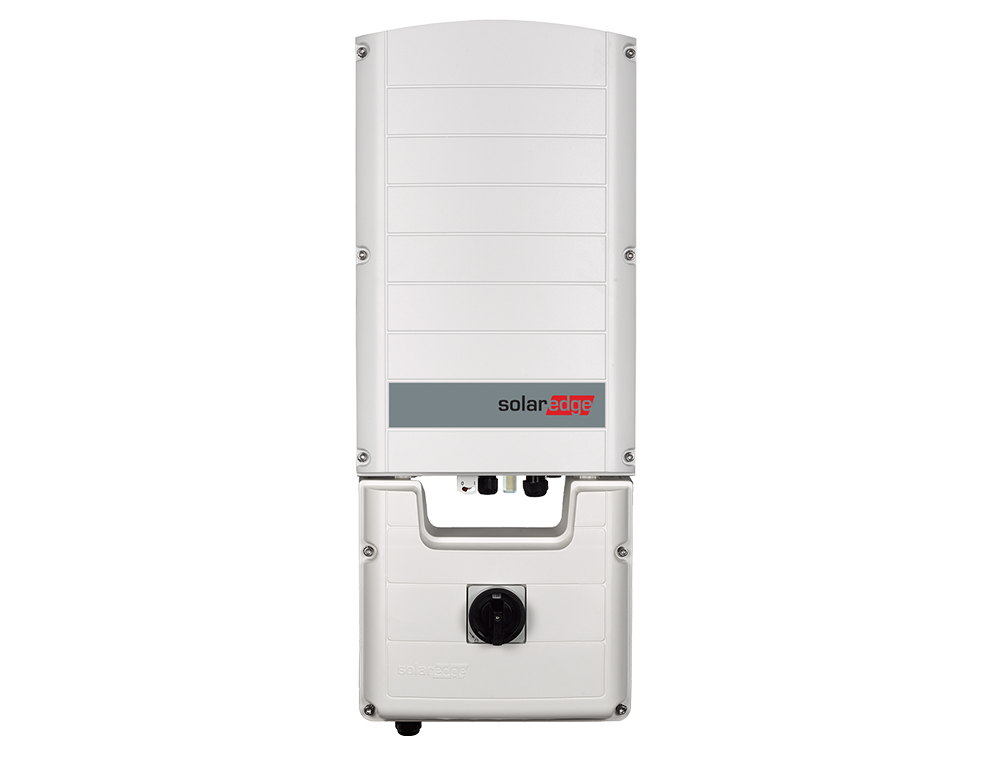
Best unit price
$2,370
$0.26 per watt
Best system price
Installed 5kW system
$11,529
$2.31 p/w
Table 1: SE9KUS overview
Inverter Type
String Inverter
Minimum Voltage
200 V
Maximum Voltage
500 V
Maximum Current
45 A
Peak Output Power
9 kW

Best unit price
$1,803
$0.24 per watt
Best system price
Installed 5kW system
$24,250
$4.85 p/w
Table 1: STOREDGE SE7600H-US overview
Inverter Type
String Inverter
Minimum Voltage
400 V
Maximum Voltage
480 V
Maximum Current
45 A
Peak Output Power
7.6 kW



